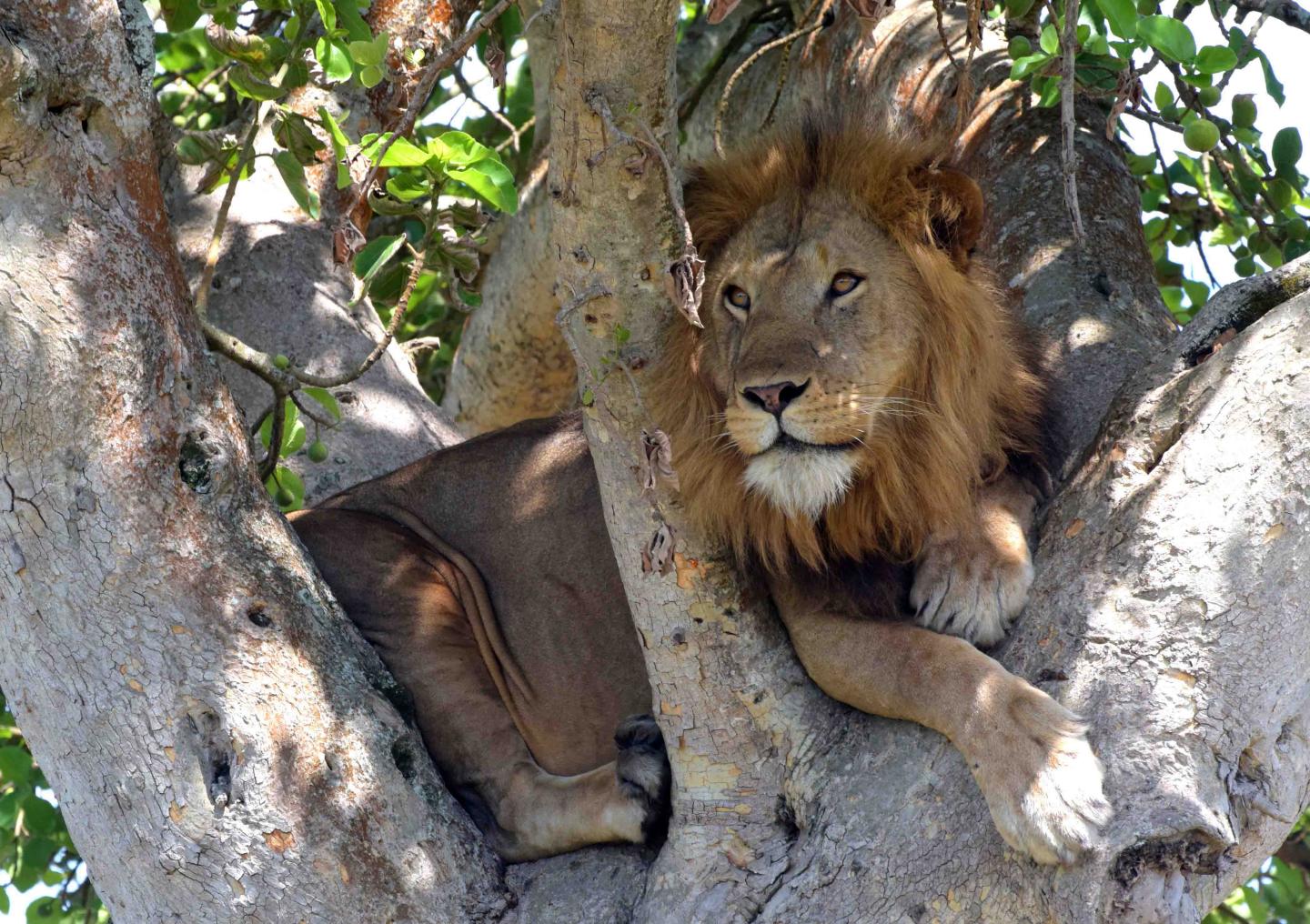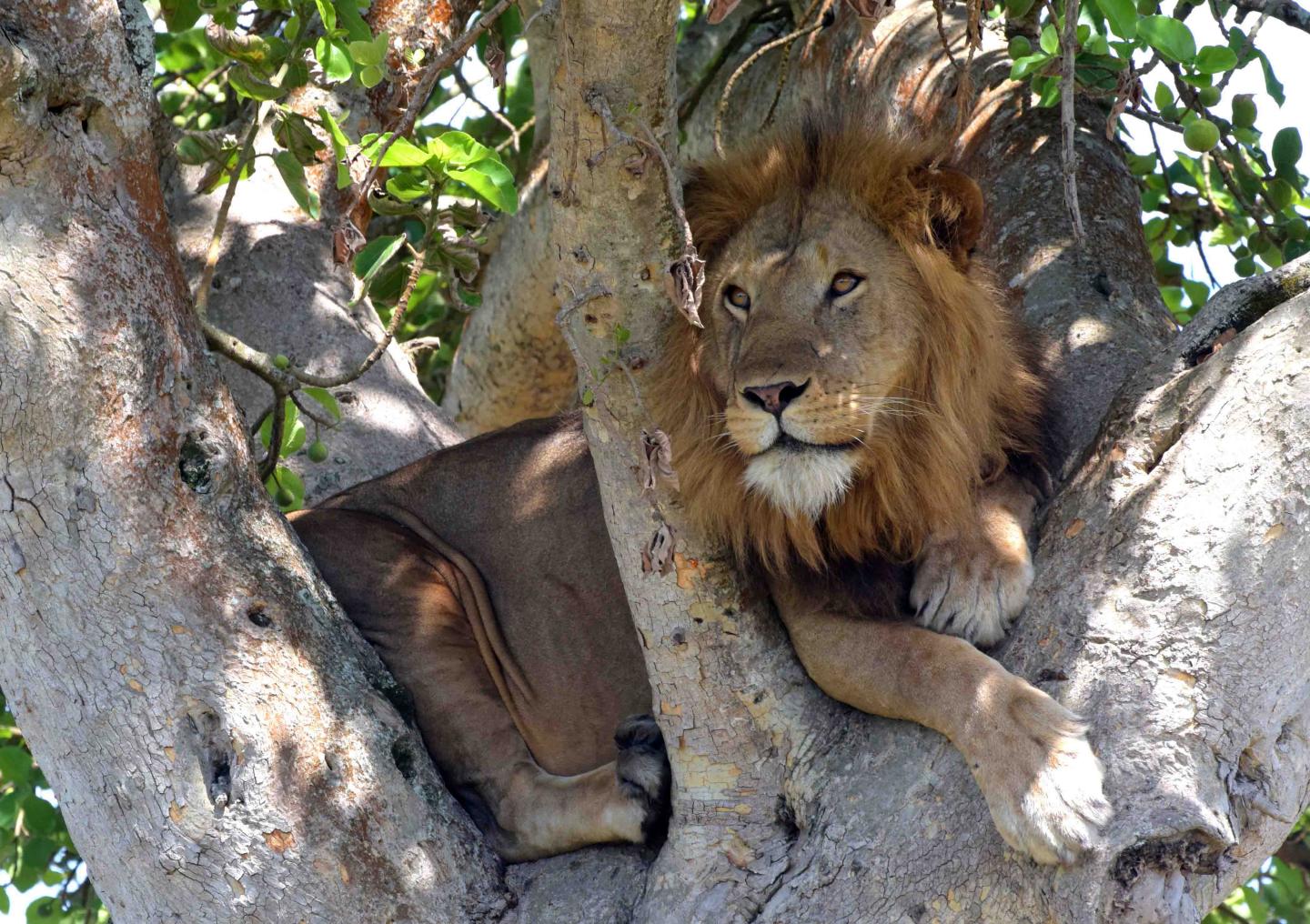
Credit: A. Plumptre/WCS.
KAMPALA, Uganda, May 11, 2017 – Scientists in Uganda studying the behaviors of the country's famous tree-climbing lions have found that the home ranges of lion prides in the study areas have increased over time as they search farther for diminishing numbers of prey animals.
In the study, researchers compared recent data on the home ranges of lions living in Uganda's Ishasha district with similar research from the 1970s to measure changes in home range size over time. They discovered the region's lion populations have responded to an overall decrease in prey biomass with smaller pride sizes and larger home ranges, presumably to compensate for fewer animals to feed on.
The study appears in a full-color edition of the Journal of East African Natural History that commemorates the 80th birthday of Jonathan Kingdon, famed zoologist and illustrator of the wildlife of Africa. The study features several of Kingdon's illustrations of lions and their prey. The authors of the study titled "Home ranges of Ishasha lions: size and location in relation to habitat and prey availability" are: Tutilo Mudumba of Michigan State University; and Edward Okot Omoya, Joel Ziwa Mustafa Nsubuga, and Andrew Plumptre of WCS (Wildlife Conservation Society).
Overall, the home range sizes of Africa lions in Ishasha district–an area located in Queen Elizabeth National Park–are smaller in size (between 35 and 43 square kilometers) than the ranges of lions in places such as Serengeti National Park, where lion home ranges can extend up to 400 square kilometers.
The smaller ranges of the tree-climbing lions, along with their preference for grassland and wooded grassland habitat are related to their dependence on their main prey species, the Ugandan kob. Averaging slightly over 100 pounds, Ugandan kob are known for their distinctive lekking behavior, with males staking out prime patches of territory to attract females.
The smaller lion pride size due to fewer prey numbers likely has another impact on the ability of lions to hunt larger, more challenging prey. One such prey species is the Cape buffalo. Whereas lions in other areas often prey on buffalo, one of the larger prey species for lions, the big cats in Ishasha tended to avoid buffalo, probably as a result of fewer lions in each pride to help bring the big herbivores down.
"The tree-climbing lions of Ishasha are an important ecotourism draw for the country, yet these big cats are starting to decline in number," said Simon Nampindo, Director of WCS's Uganda Program. "One way to ensure a future for lions in Uganda would be to invest in increasing prey density in Queen Elizabeth National Park while protecting the important grassland and open woodland habitat that the lions rely upon."
###
This work was supported by Panthera and the US Agency for International Development.
Media Contact
John Delaney
[email protected]
718-220-3275
@TheWCS
http://www.wcs.org






